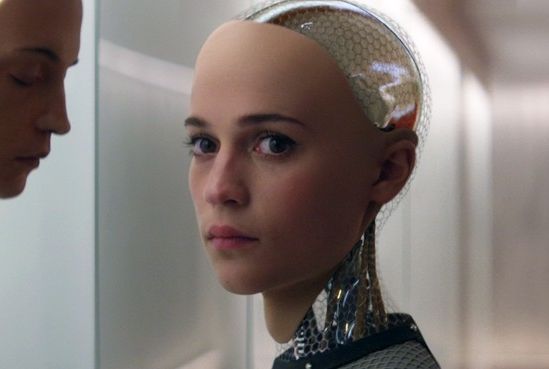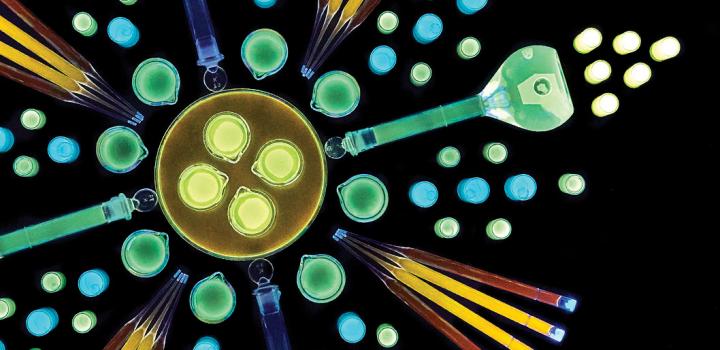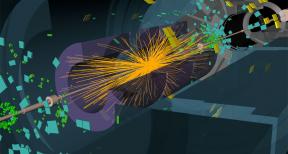Page 11193
May 9, 2016
DARPA-backed researchers create dissolvable electrodes for brain monitoring
Posted by Karen Hurst in categories: bioengineering, biotech/medical, neuroscience
Next time you go for a brain scan; you could actually see dissolvable electrodes.
Hmmm
Scientists at the University of Pennsylvania in a study funded by the Defense Advance Research Projects Agency (DARPA) are developing implantable electrodes for brain monitoring that melt away at a predetermined rate. The devices could come in handy for monitoring and treating certain neurophysiological disorders such as Parkinson’s, depression and chronic pain.
Continue reading “DARPA-backed researchers create dissolvable electrodes for brain monitoring” »
May 9, 2016
Imagine Discovering That Your Teaching Assistant Really Is a Robot
Posted by Dan Kummer in categories: climatology, computing, robotics/AI
I wonder if this would qualify as a turing test.
Lalith Polepeddi, a (human) teaching assistant and researcher on the Jill Watson project at the Georgia Institute of Technology.
Photo:
Lalith Polepeddi.
Continue reading “Imagine Discovering That Your Teaching Assistant Really Is a Robot” »
May 9, 2016
Artificial Intelligence Evolution: Future AI Technologies To Make AI Obsolete And Intertwine Physical, Digital Realities?
Posted by Karen Hurst in categories: evolution, robotics/AI, singularity

The troubling piece of this article is that the article leaves out how the underlying technology will need to change in order for AI to truly intertwine with humans. AI in the existing infrastructure and digital technology with no support of BMI, microbots, etc. will not evolve us to Singularity by itself and without changes to the existing digital landscape.
As artificial intelligence continuously evolves, the future of AI is also becoming more significantly challenging to perceive and comprehend for humans.
May 9, 2016
How Quantum Entanglement Can Help You Understand Many-Worlds
Posted by Karen Hurst in categories: materials, quantum physics
Quantum Entanglement by Orzel part 2.
Entanglement is weird, but also provides a nice, concrete experimental framework that can ground an explanation of how decoherence hides the existence of other branches of the wavefunction.
May 9, 2016
Samsung’s Quantum Dot TV Tech to Find Medical Applications
Posted by Karen Hurst in categories: bioengineering, chemistry, electronics, food, nanotechnology, quantum physics
Samsung get into the cancer treatment space with their own Q-Dot technology? Another reason for the FDA to show up in tech’s backyard; lookout for all those future federal and state regs & compliance training that will be coming that eats up 20 hours each month of your scientists and engineering talent’s time.
For a lot of users, Samsung might be known best for their smartphones and other mobile devices, but the company is so much more than that. Many of you reading this might have one of Samsung’s Super HD TV sets, a curved Samsung TV or some other model of theirs. Next to smartphones one of their more popular consumer electronics is of course of TVs, and with the advent of new technology such as Quantum Dot, Samsung is getting even better at producing a great image. One area that you might expect to find this Quantum Dot technology being used is for medical uses, but that’s just what researchers have been exploring recently.
Explaining a Quantum Dot can become quite tricky, but to cut a long story short, they are semiconductors that are so small they register at the nanoscale side of things. In terms of Quantum Dots used in television displays, it’s their ability to precisely tune to a specific and exact part of the color spectrum that makes them so attractive, not to mention their much lower power draw. Now, Kim Sung-jee, a professor of the Chemistry department at Pohang University of Science and Technology (POSTECH), has said that “when combining protein which clings to cancer cells and quantum dots, it can be used to seek out cancer cells in the body”. It’s reasoned that the potential for these Quantum Dots to be so precise in terms of color reproduction can help physicians track down certain cancer cells.
Continue reading “Samsung’s Quantum Dot TV Tech to Find Medical Applications” »
May 9, 2016
First single-enzyme method to produce quantum dots revealed
Posted by Karen Hurst in categories: engineering, particle physics, quantum physics, solar power, sustainability
Creating Q-Dots/ QDs (Acronym seems to depend on which reference book, article that you read) more cheaply and efficiently too.
Quantum dots (QDs) are semiconducting nanocrystals prized for their optical and electronic properties. The brilliant, pure colors produced by QDs when stimulated with ultraviolet light are ideal for use in flat screen displays, medical imaging devices, solar panels and LEDs. One obstacle to mass production and widespread use of these wonder particles is the difficulty and expense associated with current chemical manufacturing methods that often requiring heat, high pressure and toxic solvents.
But now three Lehigh University engineers have successfully demonstrated the first precisely controlled, biological way to manufacture quantum dots using a single-enzyme, paving the way for a significantly quicker, cheaper and greener production method. Their work was recently featured in an article in The New York Times called “A curious tale of quantum dots.”
Continue reading “First single-enzyme method to produce quantum dots revealed” »
May 9, 2016
The Quantum Experience: Feynman’s vision comes into focus
Posted by Karen Hurst in categories: computing, quantum physics
Great article about a mad-scientist whose vision caused the world to look cross-eyed. Many of us have been there before some time in our lives.
In 1981, Richard Feynman urged the world to build a quantum computer. In his own words.
“Nature isn’t classical, dammit, and if you want to make a simulation of nature, you’d better make it quantum mechanical, and by golly it’s a wonderful problem, because it doesn’t look so easy.”
Continue reading “The Quantum Experience: Feynman’s vision comes into focus” »
Communication Quantum Style!
https://www.sciencenews.org/article/communicating-covertly-goes-quantum
Researchers are working to make quantum messages that are undetectable.
May 9, 2016
A.I. Is Getting Better at Spotting Galaxies
Posted by Dan Kummer in categories: computing, robotics/AI, space
It would take human volunteers 120,000 years to classify every galactic image that comes through a new space telescope. That’s where computers come in.

















